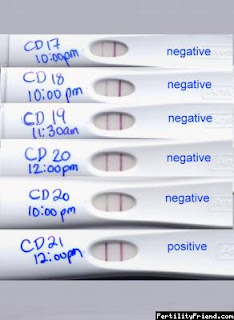What is incompetent Cervix (IC)?
Incompetent cervix (IC) is essential a weak cervix. Mainly occurring in the 2nd trimester, the weight of the baby causes the cervix to dilate prematurely and this can result in premature labour (PTL). IC is characterized by dilation in the absence of contractions.
What is cervical insufficiency?
Cervical insufficiency is having little to no cervix. Some women are born with little to no cervix due to a congenital anomaly. Surgery can also be a main reason for cervical insufficiency. A cone biopsy or a cervical surgery for cancer can result in part of the cervix being compromised and cervical insufficiency.
How is it diagnosed?
Unfortunately, unless dilation is detected during a routine ultrasound, IC is very hard to diagnose. Some women lose multiple babies in the 2nd trimester without a reason. Generally, three losses in the 2nd trimester with premature labour are deemed to be IC. However, doctors have started to perform more cervical monitoring for women with suspected IC.
What treatment options are there for IC?
Cervical cerclage (aka cervical stitches) – stitches are placed to hold the cervix closed and prevent cervical shortening. There are two main types:
Preventative cerclage – placed at around the 12-13th week of gestation. When a diagnosis of IC has been made during a previous pregnancy, your OB will likely recommend a cerclage at the end of the 1st trimester. The success rate is about 90-95%.
Emergent cerclage – placed during the 2nd trimester after dilation has already started. This type is usually due to the discovery of IC that was not known. The success rate is lower (40-60%) than the preventative cerclage, but many women are successful with this technique. Also, most doctors will not perform an emergent cerclage after 23 weeks due to the risk of premature rupture of membranes and possible infection.
Bed rest – By placing the women on bed rest, the baby’s weight is taken off the cervix and the cervix is less likely to dilate. The bed rest period will vary from one women to another usually depending on cervical length through the course of the pregnancy.
Progesterone -Some women experience contractions even after the cerclage is placed. Progesterone gels or P17 injections (17 alpha-hydroxyprogesterone caproate) are intended to prevent the onset of PTL.
Cervical length monitoring – The length of the cervix will be measured and examined to check for shortening and/or funneling. Transvaginal ultrasound generally gives more reliable measurements than transabdominal ultrasound.
Your doctor may recommend one or all of these treatments depending on your specific situation.
Dr. Google told me that there are different methods of cerclage. What is the difference between them?
There are two main methods of cerclage. Each has advantages and disadvantages.
Transvaginal Cerclage (TVC) - This method is the most common. It is essentially placing sutures onto the cervix to hold it closed. There are several techniques of how the stitches are placed (McDonald’s, Shiradkor, etc.); however, all have approximately the same success rate. Different doctors have preferences for specific techniques.
Advantages
- the sutures can removed from the cervix and allow for a vaginal delivery
- no incisions are needed as the sutures are placed through the vaginal opening
Disadvantages
- not suitable for women with cervical insufficiency
Transabdominal Cerclage (TAC)- This method is usually reserved for women with a failed transvaginal cerclage or those with cerclage insufficiency. Sutures and surgical mesh are placed internally (inside the abdomen) to close the cervical opening.
Advantages
- higher success rate than transvaginal
Disadvantages
- makes vaginal delivery impossible, you must have a C-section
- requires laproscopic surgeries during pregnancy to be placed
- often not available unless a TVC has already failed
Why doesn’t my OB place the cerclage as soon as I get a BFP?
Viability. You OB will want to ensure that the pregnancy is viable before placing the cerclage. Otherwise, they will have to perform two surgeries (placement and removal). Unfortunately, women with IC still have same risk of a 1st trimester loss as any other woman does.
I had IC with my twins. Will it happen again with another pregnancy?
Not necessarily. Some women who have IC with multiples go on to have normal pregnancies with singletons. However, there is no way to know for sure. Some doctors will take the “wait and see” approach, but this can be risky. Finding a doctor that will perform the cerclage preventatively can be difficult, but is highly recommended.
What can I do while we’re TTC?
Get the right doctor – The right OB will make all the difference in having a successful pregnancy. Find an OB with experience with IC and cerclage. You will need to have your doctor in place before you get pregnant, as you will need to start your appointments sooner than most women. Discuss your plan with your OB before you get pregnant. Be clear about what restrictions will be in place during the pregnancy.
For those who live in more rural areas, you may have look to a major city to find the right doctor. You want someone who performs cerclages on at least a semi-regular basis, not the OB that does one cerclage a year or less.
Get the right insurance and get your finances in order – You know that you will be high-risk next time out, make sure you have the financial resources to cover all the possible expenses that may arise. Bed rest (with no income) and extra doctor visits are not cheap.
Get in shape physically – You can’t make your cervix any stronger, but you can get everything else stronger. Being in shape physically will help to prevent any other complications, like gestational diabetes or high blood pressure. You have enough to manage with IC.
Consider talking to a therapist – Your loss can be very difficult to process. Therapy can help you work through all the emotional issues of your loss and a subsequent pregnancy.







